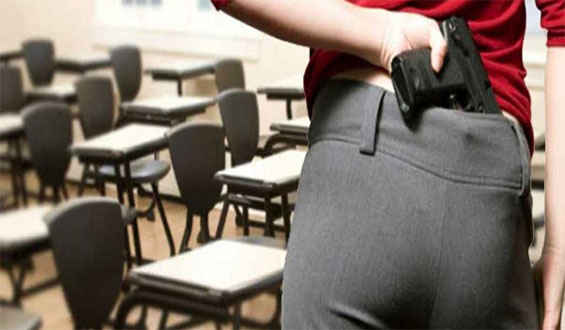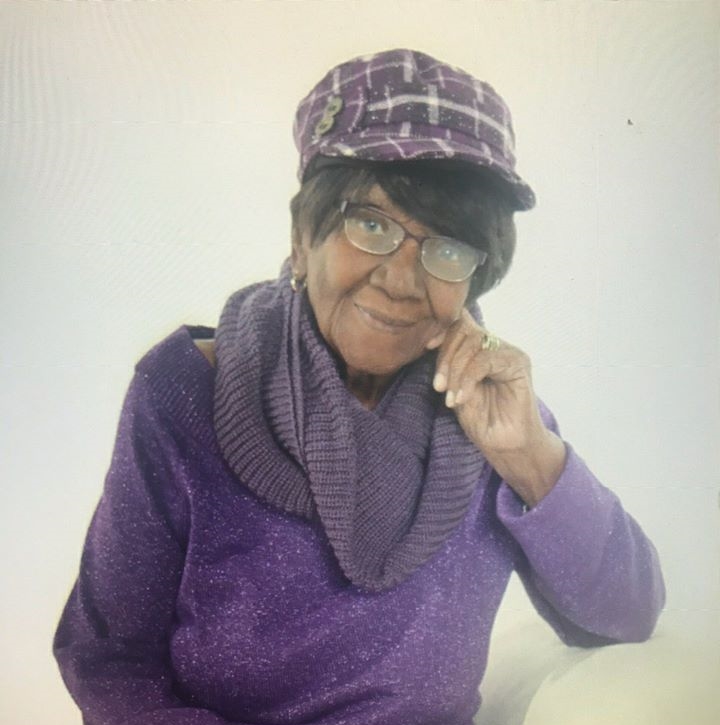
By Stacey Patton
Stacey Patton is an assistant professor of multimedia journalism at Morgan State University and the author of “Spare The Kids: Why Whupping Children Won’t Save Black America.”
President Trump wants to arm teachers to prevent, or reduce the carnage from, future school shootings like the one at Marjory Stoneman Douglas High School in Parkland, Fla., this month. “A teacher would have shot the hell out of him before he knew what had happened,” Trump said last week about the attacker in Florida. He’s not the only one who thinks this is a good idea: Several states are already considering legislation to allow guns to be carried into schools, ostensibly to protect kids.
But putting guns into the hands of schoolteachers would be extraordinarily dangerous for black and Latino students, who are already often forced to try to learn in hostile environments where they’re treated as threats.
How long would it be, if Trump’s plan became reality, before a teacher shoots a black student and then invokes the “I feared for my life” defense we continually hear from police officers who misinterpret young black people’s behavior with deadly consequences?
A mountain of data on persistent racial biases and disparities in education and on police presence in schools — as well as a recent increase in racial harassment in schools — makes it clear that kids of color won’t be safe if their teachers are carrying weapons.
Those children are the ones who always feel the brunt of policing inside and outside of schools. Most high-profile mass shootings have been committed by white men, but metal detectors, school police and armed guards are disproportionately placed in public schools with majority black and other nonwhite students, along with locked gates, random sweeps, and a host of other surveillance and security measures to maintain control in their schools. Research shows that such practices foster hostile environments that have contributed to racial disparities in school suspensions, expulsions and arrests leading to the “school-to-prison pipeline,” by pushing more students of color out of school and into the juvenile justice system.
[Harsh physical discipline is a daily risk for black children]
One report last year found that “school resource officers, who essentially function as law enforcement personnel, are more likely to be deployed on campuses with large numbers of black students.” A 2014 Department of Education publication reported that black students were disproportionately likely to be referred to school resource officers or arrested — they made up 16 percent of total enrollment but 27 percent of students referred to resource officers and 31 percent of students arrested in school-related matters. White students, who were 51 percent of the total, accounted for only 41 percent of resource officer referrals and 39 percent of arrests. Another study found that “implicit bias” on the part of teachers often means young black males in schools are seen as “irresponsible, dishonest and dangerous.” Considering that about four of every five teachers in U.S. public schools are white, there’s ample reason to worry about how that bias would play out with guns involved.
Already, we have a disturbing number of examples of white teachers mistreating black students. For example, Patricia Cummings, a middle school teacher in the Bronx borough of New York, made her seventh-grade students lie on the floor while she stepped on one student’s back to illustrate the trauma of the Middle Passage of the slave trade during Black History Month. White teachers and school officers have cut off black students’ hair and been accused of cutting the hoods off their jackets, slapped them, berated them with the n-word, tackled and thrown them across the classroom and allegedly snatched them out of their seats violently for not standing for the Pledge of Allegiance. Some teachers have been fired for posting racist rants on social media. Maybe that’s no surprise, though: A 2016 study in Denver Public Schools found that many teachers, especially young white women, are afraid of their black students. The report also found that white students are punished differently from their black counterparts for the same offenses. In one example, a white student deemed bored in class threw chairs around the classroom and was promoted to a higher math class while a black student was suspended for simply balling his fists.
So with good reason, black and Latino students, and their parents, would probably see arming teachers as a threat, even though the idea is supposed to be protecting kids. That would make it even harder than it already is to establish trust across racial lines in the classroom.
[Racism in schools is pushing more black families to homeschool their children]
No wonder teachers are already vehemently against Trump’s plan.
“I fear my little alternative high school of 100 students and 15 teachers will turn into an armed prison camp,” says Joe Lieb, an education consultant and activist who teaches at the Alternative Center for Excellence in Danbury, Conn., located just five minutes from Sandy Hook Elementary School. “By playing into this armed teacher agenda, we are setting up our at-risk students, especially our black and brown students, as targets for the pipeline as well as actual physical targets of teachers’ bullets. It is insanity driven by greed, prejudice and privilege.”
Anjene Davis works in the Charleston County Public School District in South Carolina, where more than 80 percent of the teachers are white women. Davis, a black man, says that “arming white teachers would be like trying to put out a fire with gasoline. In many cases, the little cultural nuances in black kids are often foreign to white teachers. Black assertiveness is seen as black hostility to white teachers, as opposed to the teachers recognizing that it is a strength in the black student. I fear that when black students stand up for themselves, white teachers will interpret that as the students attacking them.” Davis also fears that any black or Latino teachers who carry weapons to “protect” students would wind up being shot by police during an active-shooter crisis in their schools.
Teachers know what they really need to transform their classrooms and school into places of empowerment, and it’s not guns. On Twitter, they used the #ArmMeWith hashtag to list more important priorities: smaller classrooms, improved textbooks, adequate supplies and more resources for students with challenges.
These recent calls aren’t really about protecting young people. Calling for stricter policing, metal detectors and guns in schools is an attempt to change the subject from gun control. This is about protecting the narrative that white suburban schools are places of safety and preserving the idea that violence is elsewhere, that black and Latino youth represent danger. Even white children aren’t immune from the dangers of mass shootings in schools. If their families and governments can’t keep them safe, what reason is there to expect a mostly white teaching force to magically overcome the risks of implicit bias, prejudice and racial microaggressions to protect children of color whom they already have difficulties communicating with and perceive as threats?
“My biggest fear and disappointment is that I think many students and families of color would simply opt out of public education if arming teachers were to be enacted,” says Melissa Fontana Quiñones, a former special education teacher-turned school social worker at the Ohrenberger School in Boston. “Rightfully so. The fear would be absolutely legitimate, but disengagement would further divide us so much further. It would lead to a setback like never before in the movements for civil rights and human rights.”
Read more:
Why I will never carry a gun in my classroom
Zero-tolerance policies are destroying the lives of black children
I’m a Broward County teacher. Thoughts and prayers won’t keep my students safe.










